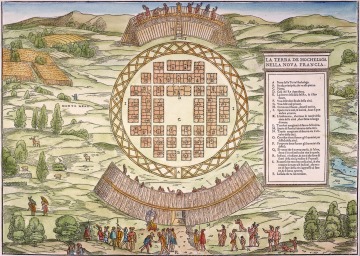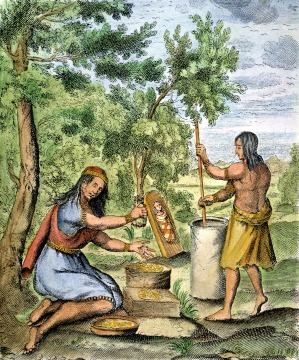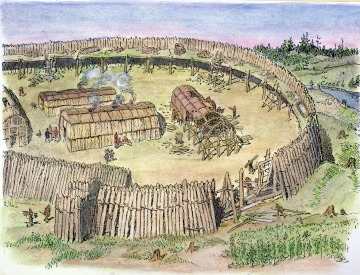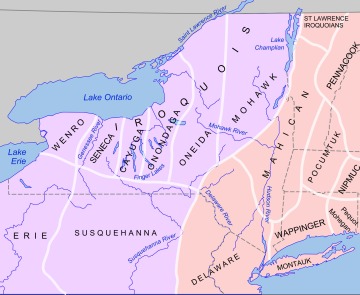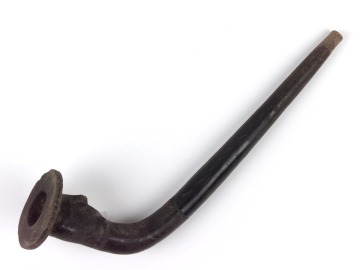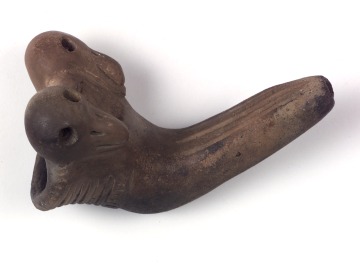AD 1506–18: Viruses move inland along with French traders
The Haudenosaunee (Iroquois) and Huron begin exchanging goods with French traders pushing inland from the Atlantic coast along the St. Lawrence River. For Native peoples, every contact holds the risk of exposure to a virus or infection to which they have no immunity.
- Theme
- Epidemics
- Region
- Northeast
Haudenosaunee (Iroquois) village of Hochelaga, near present-day Montreal. Color woodcut from Giovanni Battista Ramusio’s Delle Navigazioni e Viaggi, AD 1556. The Iroquois traded animal furs for European goods such as knives, axes, fishhooks, woolen and linen cloth, blankets, silver jewelry, glass beads, guns, and gunpowder.
Courtesy Granger Collection, New York
A French artist’s depiction of Iroquois women grinding corn or dried berries while a baby naps in its cradleboard, AD 1664
Courtesy Granger Collection, New York
European artist’s depiction of a Huron Iroquois palisaded village, ca. AD 1500
Courtesy Granger Collection, New York
Approximate location of the five tribes in the original Haudenosaunee (Iroquois) Confederacy—Mohawk, Oneida, Onondaga, Cayuga, and Seneca.
Cayuga pipe, AD 1500-1600, Cayuga County, New York. Long before European contact the Haudenosaunee (Iroquois) were involved in an intricate trade network with other Native groups. Clay pipes were an important item that reached other tribes all along the east coast of North America.The Cayuga are one of the five tribes in the original Haudenosaunee Confederacy.
Courtesy National Museum of the American Indian, Smithsonian Institution. Photo by Photo Services.
St. Lawrence Iroquoian pipe, AD 1500-1600, Jefferson County, New York. Pipes of fired clay were among the many types of items manufactured by the Iroquois.
Courtesy National Museum of the American Indian, Smithsonian Institution. Photo by Photo Services.
